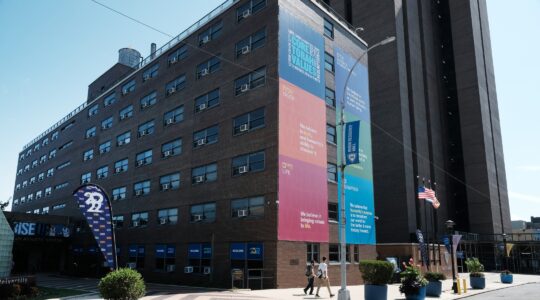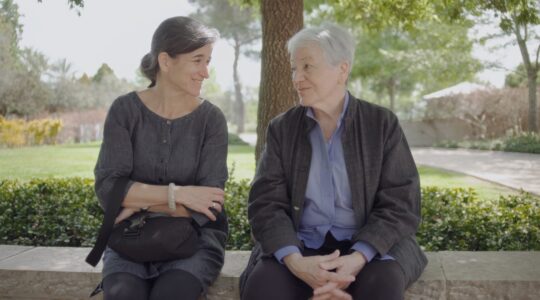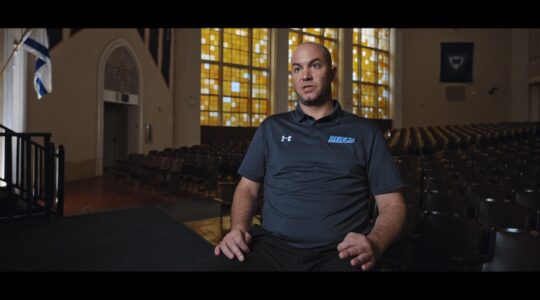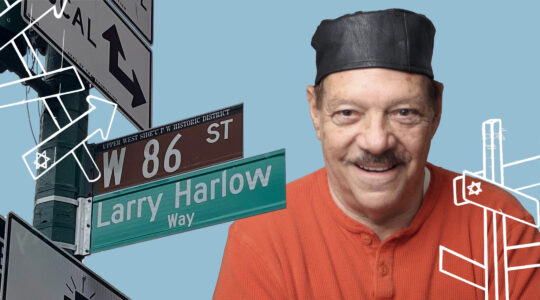At the Plainview Jewish Center, the congregation’s 14 Torah scrolls were recently unrolled and examined by three Torah scribes while congregants milled around.
“We were evaluating the Torahs, repairing some and registering those that had not been previously registered,” explained Zerach Greenfield, executive director of Machon Ot, a nonprofit Torah registry organization with offices in College Point, Queens, and Jerusalem.
The organization was created nearly 20 years ago at the behest of Interpol and the Israeli police department after the discovery of 65 stolen Torahs hidden behind a false wall in Rosh Ha’ayin, Israel, Greenfield said.
Since then, registration of sifrei Torah has gained increased acceptance. Greenfield pointed out that the eight Torahs in the main sanctuary of the Jewish Center
of Kew Gardens Hills were stolen last year. The custodian was later arrested and charged with the theft, and the scrolls were recovered.
Greenfield said those Torahs were registered with Machon Ot (Institute of the Letter) and could have easily been identified if a question had arisen about their ownership.
The International Torah Registry uses pin marks to identify Torahs, but Greenfield said Machon Ot developed two other “far more sophisticated” methods of identification.
The first involves making a transparency of a randomly chosen column of the Torah; because each Torah is written by hand, no two columns are identical. Transparencies can be placed over the column to see if the letters line up. The second method involves scanning a column and drawing an invisible vertical line on a template to see which letters cross that line when measured from the end of the line, creating a unique pattern.
Lacking identification marks, there is no way to identify stolen Torahs and return them to their owners.
Greenfield said sofrim, or scribes, are often the very people who steal and try to resell the scrolls. Therefore, he said, an identification method that these men could not circumvent was needed. That ruled out invisible ink, embossed stamps and code markings.
Rabbi Ronald Androphy, spiritual leader of the East Meadow Jewish Center, said Machon Ot registered his congregation’s nine Torahs, evaluated them to check for discoloration, and repaired letters that had become difficult to read. The registration, evaluation and repair cost a total of $30,000, he said.
In the past, Rabbi Androphy said he would call a sofer when there was a problem with a Torah. And he said that more than 20 years ago he sought to register the Torahs with the Universal registration with its pin code but found the kit he was sent “very difficult to do.”
“We never followed through with it,” he said.
Now, his Torahs are not only registered with Machon Ot but repaired by it, Rabbi Androphy said, noting that Machon Ot once took two of his congregation’s Torahs to its Jerusalem office for repair.
“Torahs deteriorate naturally,” he said, adding that Machon Ot scribes have returned at no additional charge to fix letters in those Torahs when the ink later cracked.
Although Machon Ot helps synagogues interested in commissioning the writing of a new Torah as a fundraising project, Greenfield said the economic downturn has caused more synagogues to hold fundraisers to repair their Torahs.
Machon Ot began registering Torahs worldwide in 1990. It now has a database of 14,000 registered Torahs and registers about 400 to 500 each year.
“The goal is 30,000 because that would be a critical mass that would make someone believe he would get caught if he tried stealing a Torah and then selling it,” Greenfield said.
As part of its evaluation of each Torah, he said, Machon Ot scribes determine what it would cost to replace it. Such an appraisal is required by major insurance companies in Israel and is helpful for synagogues and others in the United States so that they don’t over insure their Torahs.
The New York Jewish Week brings you the stories behind the headlines, keeping you connected to Jewish life in New York. Help sustain the reporting you trust by donating today.




